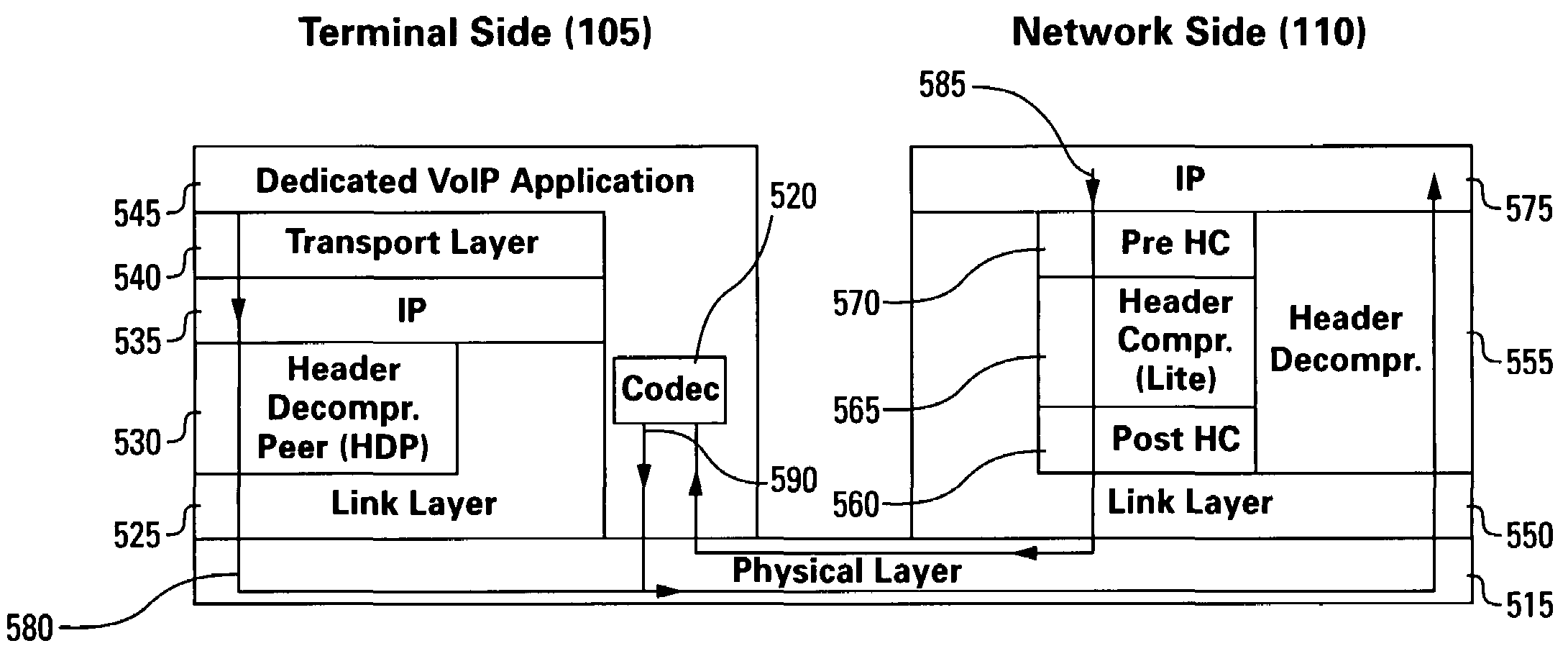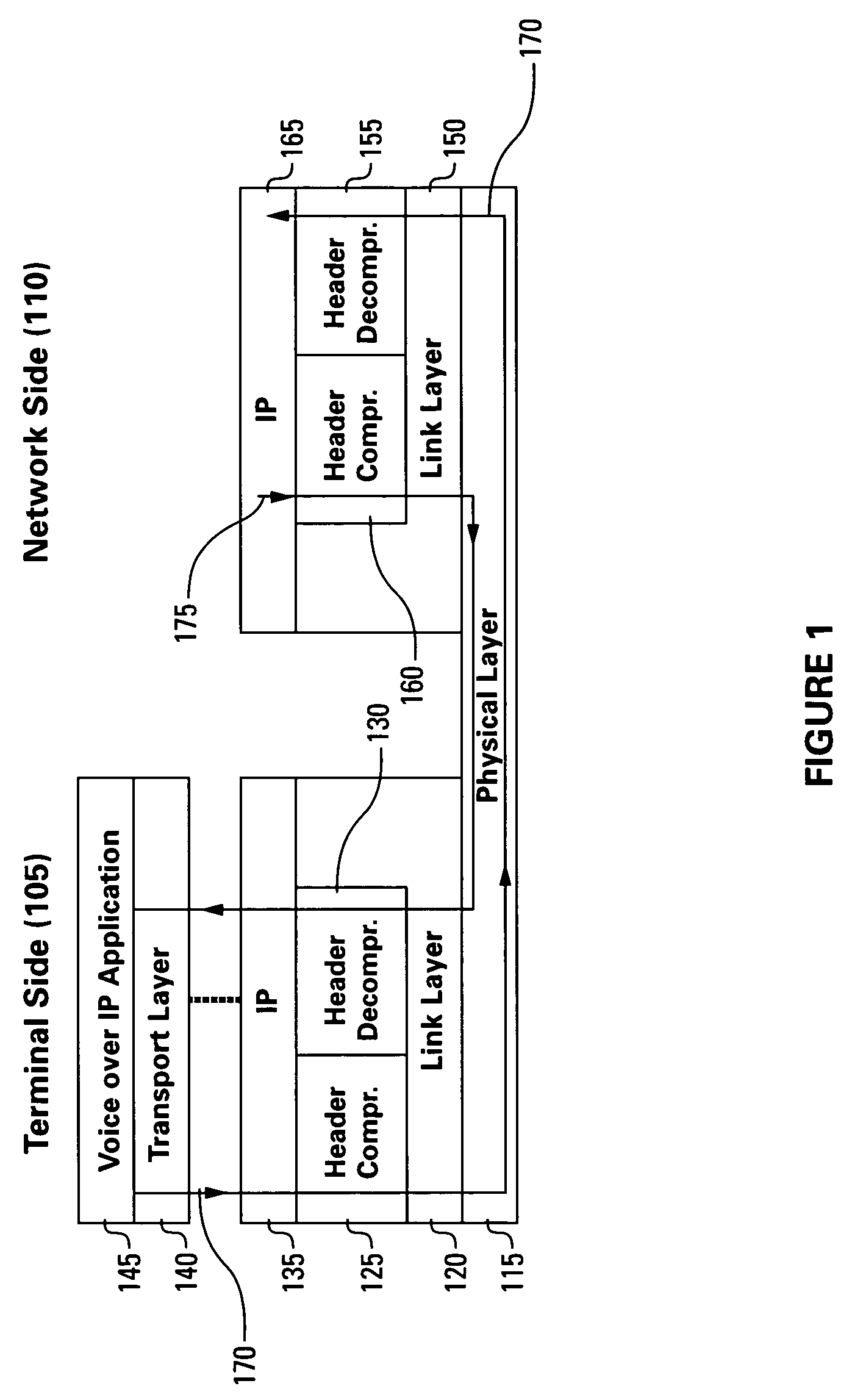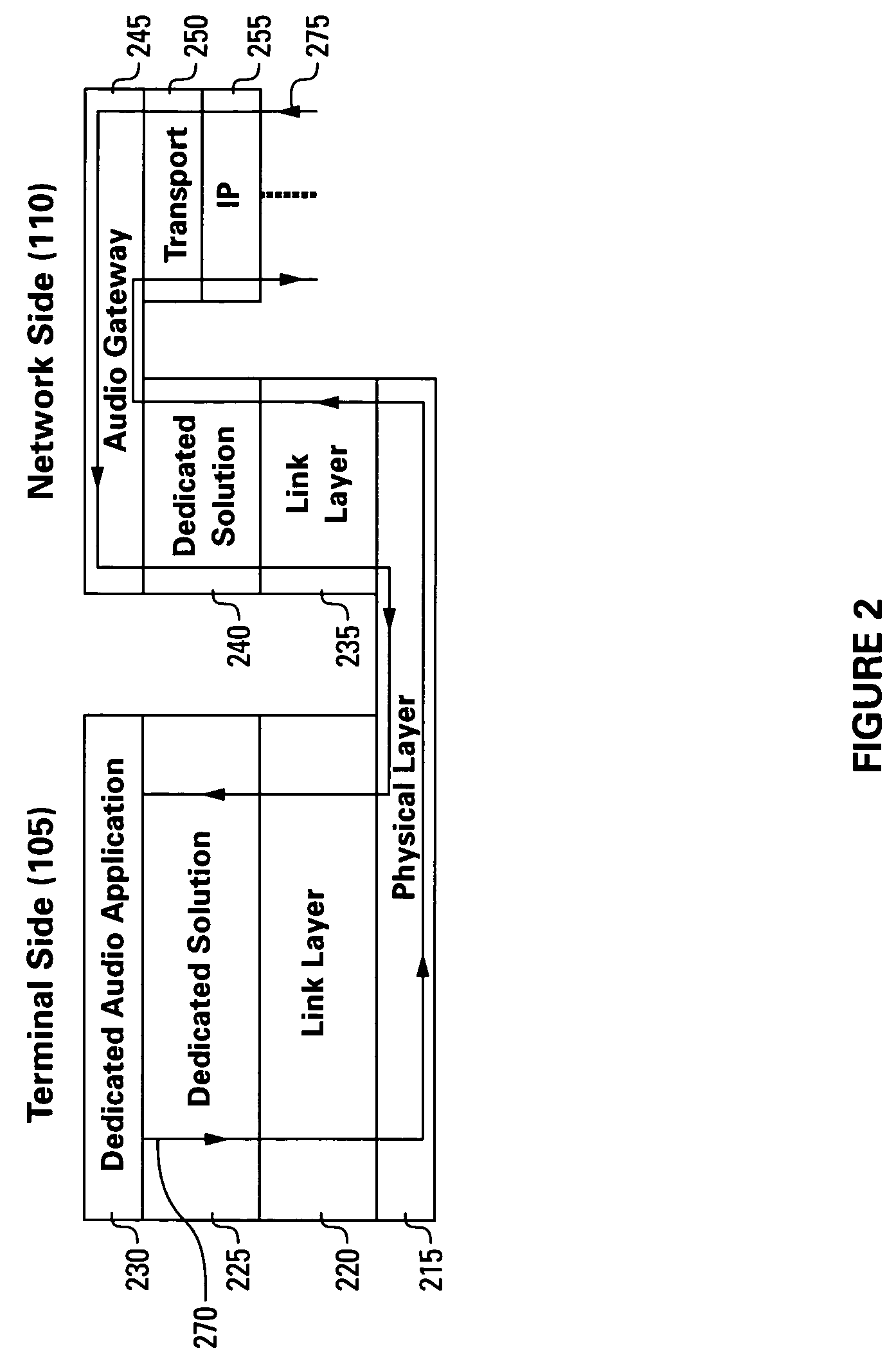Systems and methods for VoIP wireless terminals
a wireless terminal and wireless technology, applied in the field of system and method for implementing internet protocol based communications, can solve the problems of inefficient use of links, difficult tasks, and inability to efficiently implement network protocols, so as to avoid unnecessary complexity, simplify network implementation, and improve flexibility in deployment.
- Summary
- Abstract
- Description
- Claims
- Application Information
AI Technical Summary
Benefits of technology
Problems solved by technology
Method used
Image
Examples
Embodiment Construction
[0022]In general, the present invention is directed to providing various systems and methods for supporting Internet Protocol communications from a network to a remote, wireless terminal. As such, various protocol stacks and information flows are provided herein for achieving an interim solution for end-to-end Internet Protocol based communications. However, one skilled in the art will recognize that the present invention may be useful for various wireline and fiber optic communication systems, e.g., wireline VoIP telephones and systems using header compression.
[0023]End-to-end Internet Protocol (IP) for all applications is an objective for upcoming generations of computer and communications systems as the Internet and various telecommunication systems continue to become integrated. However, the cost and time it will take to convert present circuit switched networks is considerable, particularly for telecommunication systems and for using Internet Protocol for transporting audio inf...
PUM
 Login to View More
Login to View More Abstract
Description
Claims
Application Information
 Login to View More
Login to View More - R&D
- Intellectual Property
- Life Sciences
- Materials
- Tech Scout
- Unparalleled Data Quality
- Higher Quality Content
- 60% Fewer Hallucinations
Browse by: Latest US Patents, China's latest patents, Technical Efficacy Thesaurus, Application Domain, Technology Topic, Popular Technical Reports.
© 2025 PatSnap. All rights reserved.Legal|Privacy policy|Modern Slavery Act Transparency Statement|Sitemap|About US| Contact US: help@patsnap.com



